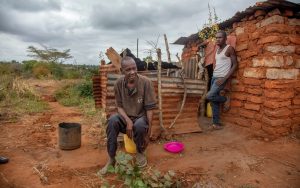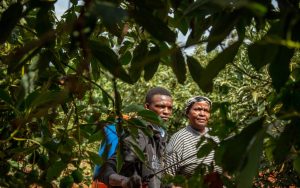Justus Ndemwa is sitting on an empty plastic water canister. He looks away. His voice is soft and faltering. “For five years the rains have failed,” he says.
Some days, the 72-year-old, who suffers from anaemia, eats only rice or beans. He is not alone. Now because of the high cost of food and the impacts of climate change, millions of Kenyans face hunger every day. As the situation persists, something, surely, has to change.
Ndemwa and his three children live in a brick and mud hut no larger than a double bed in a field a few miles from Kauwi town in Kitui County.
The landscape is sparse: the odd failed corn field, thorny scrub and patches of dry grass. The family lives largely off handouts from people in Kauwi. Ndemwa is waiting for cash transfers from the World Food Programme. Otherwise, he prays. “I pray so much,” he says, “more than five times a day.”
High numbers of people in Kenya have been experiencing hunger, partly because of food shortages and prices being far above their five-year average. In addition to the lack of supply, food price rises are also due to the lingering effects of the Covid-19 pandemic, which caused labour shortages and constrained supply chains.

Farmer Justus Musee Ndemwa with his teenage son Daniel Kasioki outside their home in Kauwi, Kitui County CREDIT: Georgina Goodwin/AKDN


